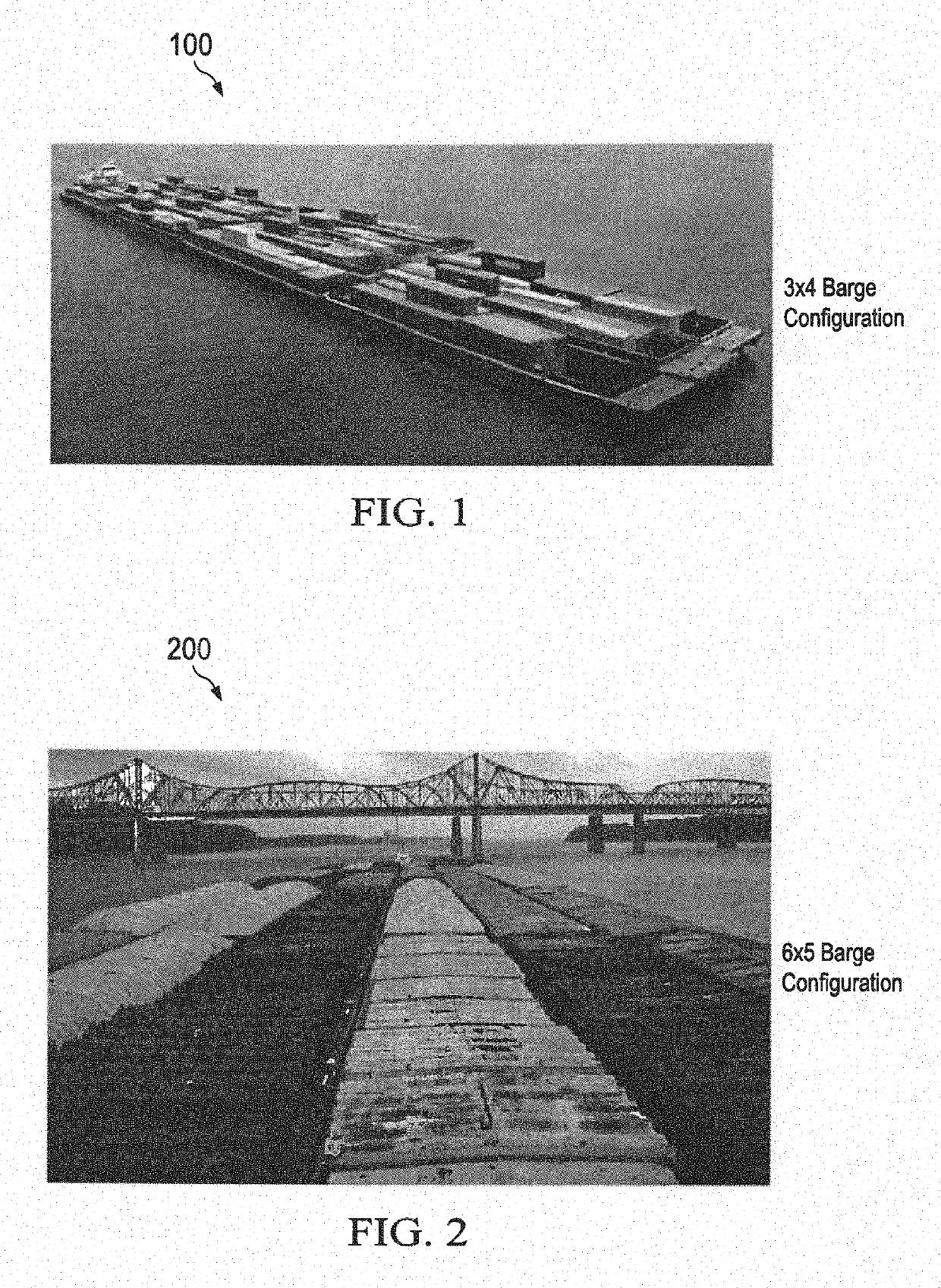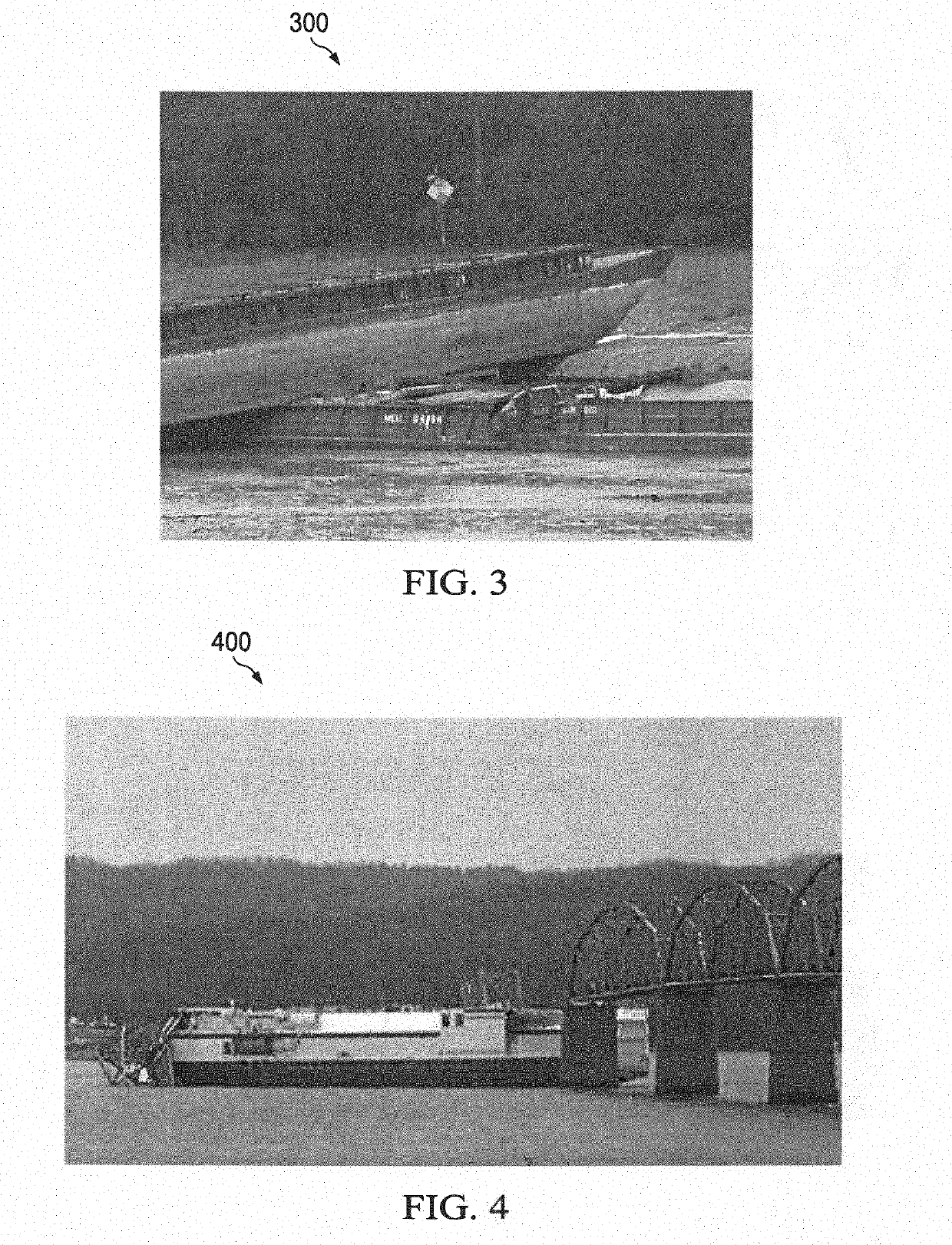Towboat and operations thereof
a technology for towboats and hulls, applied in the field of towboats, can solve the problems of low earnings in the towboat industry, low efficiency of the engine, and difficulty in recruiting young people, so as to improve the working conditions of towboat operators, reduce the cost of production of new vessels, and improve fuel efficiency
- Summary
- Abstract
- Description
- Claims
- Application Information
AI Technical Summary
Benefits of technology
Problems solved by technology
Method used
Image
Examples
Embodiment Construction
[0051]The principles described herein include the use of certain nomenclature.
[0052]A tow refers to a set of barges, where the set may include one or more barges used to transport goods on a waterway, such as a river.
[0053]A towboat refers to a conventional towboat with propulsion and steering equipment used to move a tow.
[0054]An unmanned towboat module refers to a boat that provides for propulsion and steering equipment used to move a tow, but is typically configured to be operated remotely, although onboard operator controls may be provided and living quarters are not provided as provided on traditional towboats.
[0055]Propulsion and steering equipment refers to equipment on a boat, such as a towboat or unmanned towboat module, that includes one or more engines, propellers, rudders, operator steering equipment, and / or any other equipment used to propel and control direction of the boat.
[0056]A propulsion unit includes one or more engines and propellers, but may include any other f...
PUM
 Login to View More
Login to View More Abstract
Description
Claims
Application Information
 Login to View More
Login to View More - R&D
- Intellectual Property
- Life Sciences
- Materials
- Tech Scout
- Unparalleled Data Quality
- Higher Quality Content
- 60% Fewer Hallucinations
Browse by: Latest US Patents, China's latest patents, Technical Efficacy Thesaurus, Application Domain, Technology Topic, Popular Technical Reports.
© 2025 PatSnap. All rights reserved.Legal|Privacy policy|Modern Slavery Act Transparency Statement|Sitemap|About US| Contact US: help@patsnap.com



